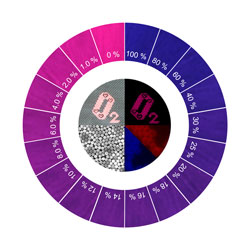This month sees the following Journal of Materials Chemistry articles in that are in the top ten most accessed for September:
A review on self-cleaning coatings
V. Anand Ganesh, Hemant Kumar Raut, A. Sreekumaran Nair and Seeram Ramakrishna
J. Mater. Chem., 2011, 21, 16304-16322
DOI: 10.1039/c1jm12523k
Thiophene-based conjugated oligomers for organic solar cells
Fan Zhang, Dongqing Wu, Youyong Xu and Xinliang Feng
J. Mater. Chem., 2011, Advance Article
DOI: 10.1039/c1jm12801a
Fibrous-structured magnetic and mesoporous Fe3O4/silica microspheres: synthesis and intracellular doxorubicin delivery
Shili Gai, Piaoping Yang, Ping’an Ma, Dong Wang, Chunxia Li, Xingbo Li, Na Niu and Jun Lin
J. Mater. Chem., 2011, 21, 16420-16426
DOI: 10.1039/c1jm13357h
One step method to encapsulate nanocatalysts within Fe3O4 nanoreactors
Shouhu Xuan, Yufeng Zhou, Huajian Xu, Wanquan Jiang, Ken Cham-Fai Leung and Xinglong Gong
J. Mater. Chem., 2011, 21, 15398-15404
DOI: 10.1039/c1jm12798e
Hybrid gold nanoparticle-reduced graphene oxide nanosheets as active catalysts for highly efficient reduction of nitroarenes
Yuri Choi, Hee Son Bae, Eunyong Seo, Seonwan Jang, Kang Hyun Park and Byeong-Su Kim
J. Mater. Chem., 2011, 21, 15431-15436
DOI: 10.1039/c1jm12477c
One-pot self-assembly of mesoporous silica nanoparticle-based pH-responsive anti-cancer nano drug delivery system
Qianjun He, Yu Gao, Lingxia Zhang, Wenbo Bu, Hangrong Chen, Yaping Li and Jianlin Shi
J. Mater. Chem., 2011, 21, 15190-15192
DOI: 10.1039/c1jm13598h
Preparation of nearly monodispersed Fe3O4/SiO2 composite particles from aggregates of Fe3O4 nanoparticles
Rong Fu, Xiumei Jin, Jinglun Liang, Weishi Zheng, Jiaqi Zhuang and Wensheng Yang
J. Mater. Chem., 2011, 21, 15352-15356
DOI: 10.1039/c1jm11883h
A review of advanced and practical lithium battery materials
Rotem Marom, S. Francis Amalraj, Nicole Leifer, David Jacob and Doron Aurbach
J. Mater. Chem., 2011, 21, 9938-9954
DOI: 10.1039/c0jm04225k
Recent progress in synergistic catalysis over heterometallic nanoparticles
Hai-Long Jiang and Qiang Xu
J. Mater. Chem., 2011, 21, 13705-13725
DOI: 10.1039/c1jm12020d
High performance supercapacitors using metal oxide anchored graphene nanosheet electrodes
R. B. Rakhi, Wei Chen, Dongkyu Cha and H. N. Alshareef
J. Mater. Chem., 2011, 21, 16197-16204
DOI: 10.1039/c1jm12963e
Why not take a look at the articles today and blog your thoughts and comments below.
Fancy submitting an article to Journal of Materials Chemistry? Then why not submit to us today!




















